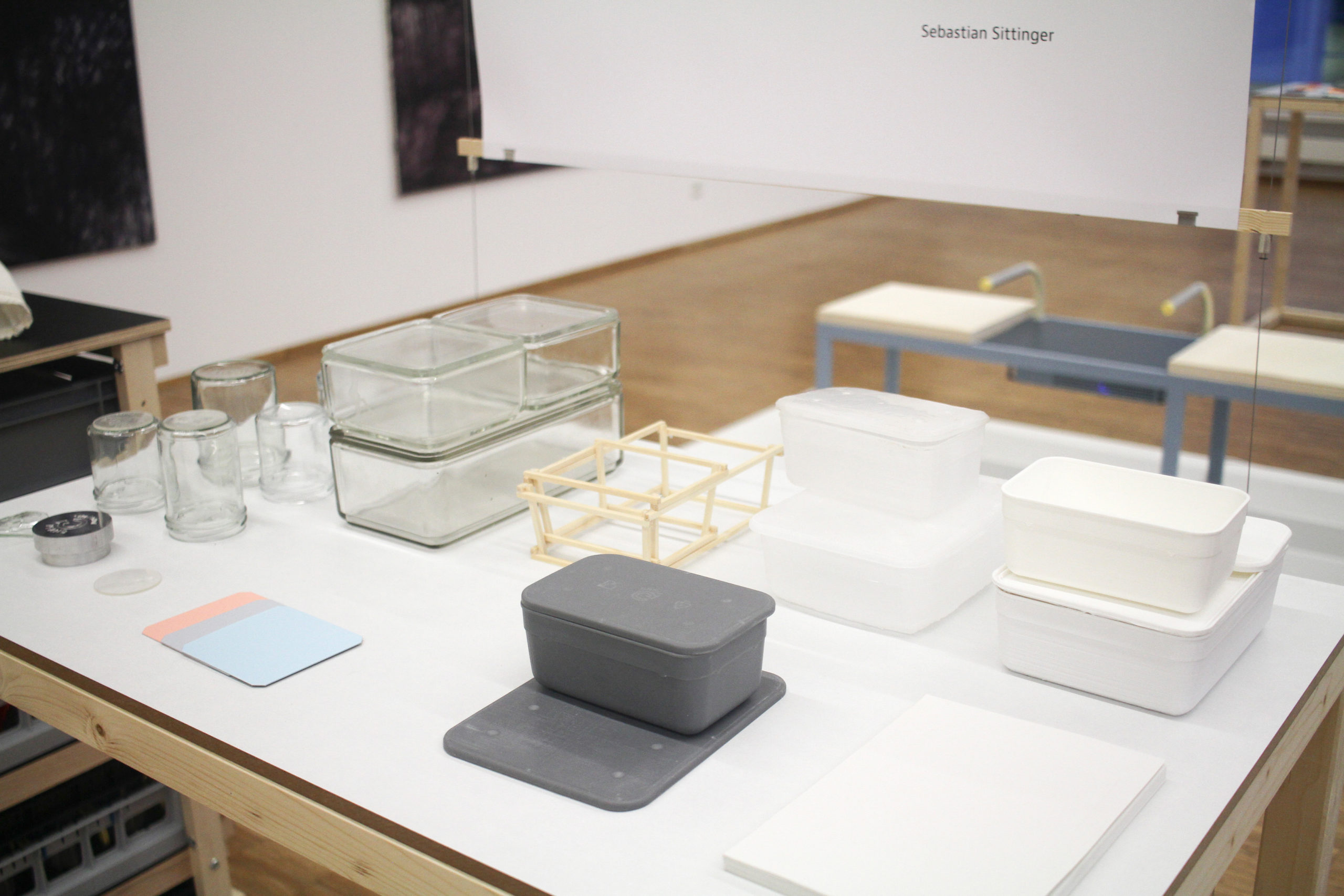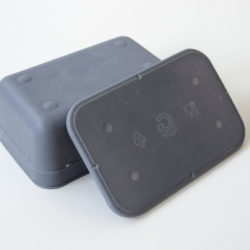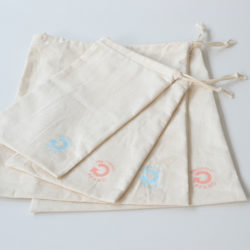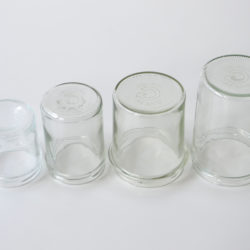Die unsichtbare Hand des Design / The invisible hand of design
Description
In the current packaging problem, the central deposit system - or ZP for short - comes into play to give packaging that has not yet been given a deposit. In addition to no shoulder glass jar for spreads, jams and more, cloth bags for vegetables, bread, cereal products or the like, reusable plastic packaging is used for shock-sensitive foods such as fruit, mushrooms, cheese, but also for meat / sausage products and fish. The deposit system is attached to the regional producers and their sales in order to shorten transport routes and to offer everyone involved the greatest possible transparency. The returnable packaging attracts new attention through the deposit and encourages customers to be more aware of their purchases. It is easy to understand anyway; the producer fills the packaging that matches the product and the customer buys it at the premium of the deposit. The content is then eaten with pleasure and, in the best case, pre-washed, returns to the producer the next time you shop. The ZP performs the cleaning, sorting and distribution of the packaging in direct cooperation with the producers.What is the Topic?
Reusable, deposit, reuse and recycle. In view of the facts to what extent people pollute and increasingly destroy their environment, good systems such as the deposit have to be expanded, rethought and disseminated. With the slogan "No to the throw-away society", the Federal Ministry for the Environment, Nature Conservation and Nuclear Safety (BMU) draws attention to our unacceptable plastic consumption due to unnecessary packaging. Food packaging in particular is highlighted here; Producers are now rewarded by the BMU for saving. (1) The packaging law, which came into force at the beginning of 2019, is intended to save waste, better recycle it and trade more transparently. The guidelines are to be tightened again in two years. (2) There are now first bans for plastic products across Europe. The prohibited products are single-use items, many of which are intended for use with food. (3) In 2019, the German environmental aid awards a prize for the most nonsensical disposable packaging. (4) It is more than a shame that there is such a waste of resources at all. Every German currently produces around 37kg of packaging waste a year (a total of 18 million tonnes). 63% of this is due to packaged fruit and vegetables. (5) 85% of customers would like to save more packaging. (6) There are now various projects that target packaging want to decimate. (1) https://www.bmu.de/wenigeristmehr/unsere-politik-nein-zur-wegwerfgesellschaft/ status: 04.07.2019 (2) https://verpackungsgesetz-info.de/ status: 04.07.2019 (3) https://www.morgenpost.de/politik/article216047361/Plastikverbot-Strohhalm-und-Co-Ab-2021-sind-diese-Produkte-in-der-EU-verboten.html status: 04.07.2019 (4) https://www.duh.de/goldenergeier/ status: 04.07.2019 (5) https://www.nabu.de/umwelt-und-ressourcen/ressourcenschonung/einzelhandel-und-umwelt/nachhaltigkeit/20787.html status: 04.07.2019 (6) https://www.nabu.de/umwelt-und-ressourcen/ressourcenschonung/einzelhandel-und-umwelt/nachhaltigkeit/19101.html status: 04.07.2019
Why does it look like this?
The central deposit system consists of the system design itself and the three containers: 1) no shoulder glass jars, 2) reusable plastic packaging and 3) fabric bags. 1) Since there is a multitude of glass jars, it was obvious to look for the best among the existing ones and to optimize them further. No shoulder glass jars already have basic elements for a good circulation, because they have no shoulder and are therefore easy to clean, the cylindrical shape offers a large volume and thus takes full advantage of the space required, the standardized twist-off lids are with Blue Seal BPA & plasticizer free. To optimize and thus expand the no shoulder glass jar, previously missing information such as the deposit system logo in the bottom of the glass is transmitted. In addition to the information on the deposit, the weight of the glass and the filling quantity when blowing glass should be stamped into the bottom. Since the mold for bottom use can be manufactured separately from the existing outer molds, enormous costs and time can be saved compared to a completely new glass blow mold. 2) The plastic shell made of polypropylene (PP) is ideally suited for use in a regional context. The two different sizes with the dimensions 180x140mm and 90x140mm and a height of 60mm are adapted to Euro dimensions and therefore - for transport - stackable well in Euro boxes. In addition, the shells are stackable, with small noses preventing the shells from coming apart due to the adhesive force. The feet of the bowls fit exactly on the hollows in the lids. The lids with ring snap connection close the bowl airtight, which means that food with liquid can also be transported. For the storage of foods such as vegetables, baked goods, mushrooms or cheese, which need air to spoil less quickly, the lids can be placed upside down on the bowl. This is how the lid lets the food breathe. To ensure that the deposit bowl finds its way back to the seller and thus into the deposit system, it is also important to use the deposit logo to identify it. In addition, a mark for food safety, the weight and the recycling mark for polypropylene is incorporated into the injection mold. By marking the type of plastic, the shell can be recycled according to type when it has had its end of use after about 500 cycles. 3) The bag as a supplement to glass and bowl is used in particular to store fruit, vegetables and baked goods and other loose goods. The bag made of linen or hemp fabric is particularly hard-wearing and provides the best cohesion even after frequent cleaning. The deposit logo and the weight information are printed on the bag so that it can be re-entered into the system.
What is special?
The deposit is not a new invention, the first reusable cans for biscuits already existed in 1928. Today there are far more deposit systems for refilling glass bottles than at that time. Coffee deposit cups in various designs are currently appearing in many places. The deposit system shines through inconspicuousness, the process of buying and returning is known from common deposit systems such as the returnable deposit bottle. As a result, the relevant food deposit system can embed itself into the existing market particularly well - almost unnoticed for the customer. Uniform markings and the guarantee of being able to return the containers to all advertised locations extends the attractiveness of the system. Less is more is well received here, the functional design enables customers to handle the new but somehow also familiar forms and processes intuitively.
What is new?
A deposit system for food containers with the possibility to give an alternative to all previously unpaid single-use packaging. For this purpose, minor changes are made to the existing design of the no shoulder glass jar. The new molded part of the floor stamp offers space for important information about empty weight, volume and of course the deposit system in which all packaging circulates. The shape of the two reusable plastic packaging has a practical meaning like all known boxes and cans: the storage of food. However, the dimensions adapted to the Euronorm enable efficient use even in larger system chains. Fine details such as stackability, drip guarantee, tight or air-permeable closure, material savings and ultimately the floor markings give the box a new look. Cloth bags can also be found in abundance, but here the cutting and sewing work has been optimized, euro dimensions have been adhered to and a marking has been added. What is new here is not completely rethought, it is rethought, optimized, adapted to the efficiency of the food industry and still conserves resources.




